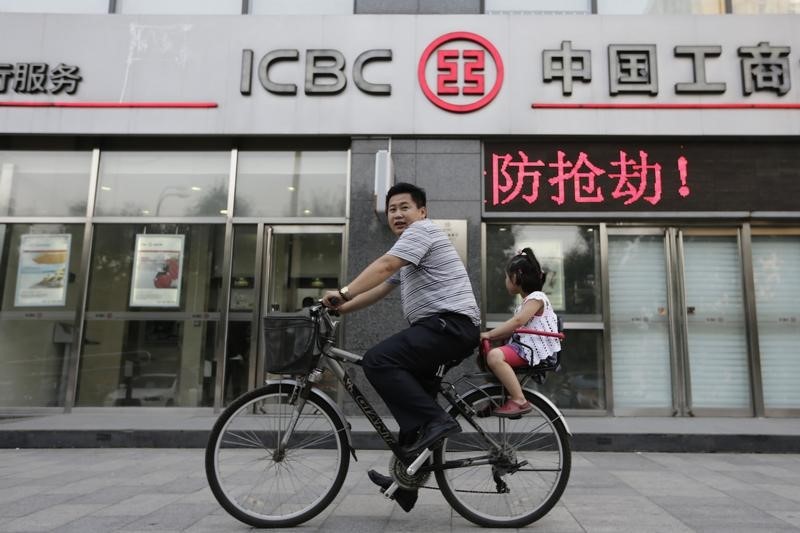By Shu Zhang and Matthew Miller
BEIJING (Reuters) - Mid-tier Chinese banks are increasingly using complex instruments to make new loans and restructure existing loans that are then shown as low-risk investments on their balance sheets, masking the scale and risks of their lending to China's slowing economy.
The size of this 'shadow loan' book rose by a third in the first half of 2015 to an estimated $1.8 trillion, equivalent to 16.5 percent of all commercial loans in China, a UBS analysis shows. For smaller banks, the rate is much faster.
This growing practice, which involves financial structures known as Directional Asset Management Plans (DAMPs) or Trust Beneficiary Rights (TBRs), comes at a time when some mid-tier lenders, under pressure from China's slowest economic growth in 25 years, are already delaying the recognition of bad loans.
"These are now the fastest growing assets on the balance sheets of most listed banks, excluding the Big Five, not just in percentage terms but absolute terms," said UBS financial institutions analyst Jason Bedford, a former bank auditor in China who focuses on the issue.
"The concern is that the lack of transparency and mis-categorisation of credit assets potentially hide considerable non-performing loans."
To provide a buffer against tough times, banks are required to set aside capital against their credit assets - the riskier the asset, the more capital must be set aside, earning them nothing.
Loans typically carry a 100 percent risk weighting, but these investment products often carry a quarter of that, so banks can keep less money in reserve and lend more.
Banks must also make provision of at least 2.5 percent for their loan books as a prudent estimate of potential defaults, while provisions for these products ranged between just 0.02 and 0.35 percent of the capital value at the main Chinese banks at the end of June, Moody's Investors Service said in a note last month.
At China's mid-tier lender Industrial Bank Co , for example, the volume of investment receivables doubled over the first nine months of 2015 to 1.76 trillion yuan ($267 billion).
This is equivalent to its entire loan book – and to the total assets in the Philippine banking system, filings showed.
Industrial Bank declined to comment for this story.
Investment receivables may include such benign assets as government bonds, but increasingly they include TBRs and DAMPs at mid-tier lenders.
At Evergrowing Bank, investment receivables reached 397 billion yuan in September, surpassing its loan book of 290 billion yuan. The bank said last year practically all of its investment receivables were DAMPs and TBRs.
REGULATOR ON ALERT
China Zheshang Bank, another smaller lender, also saw its investment receivables double over the same period, the bank's prospectus to sell shares in Hong Kong shows.
Zhang Changgong, the bank's deputy governor, said banks were increasingly becoming return-seeking asset managers, not mere lenders.
"In the past banks (made loans and) held assets. Now banks manage assets," he said.
The rapid growth of investment receivables, from less than $300 billion in 2012, comes despite a decision in 2014 by China's banking regulator to restrict purchase of TBRs and DAMPs under repurchase agreements in the interbank market, in a move to restrict the growth of these assets.
But DAMPs and TBRs soon reappeared on bank balance sheets under the line 'investment receivables'.
The China Banking Regulatory Commission (CBRC) is paying close attention to investment receivables, officials told Reuters.
China Guangfa Bank's Tianjin branch was fined last year for using its own funds to invest in a structured product that was providing $1.5 billion yuan in financing to a real estate company to avoid loan recognition and proper provisioning, the CBRC said in a note on its website.
The listing of Bank of Jinzhou , another small Chinese lender, nearly derailed last year when it revealed in documents prepared for the share sale that it was exposed to troubled solar company Hanergy Group (HK:0566), primarily through such products.
The bank subsequently sold off the bulk of its risk.
To structure these deals, a bank typically engages a friendly trust, securities, or asset management company to set up a financing arrangement for a bank client.
The bank then buys the beneficiary rights to the investment product using a special purpose vehicle. Typically, the originating bank assumes all risk should the borrower default.
"If the originating bank does not promise to pay from its own pocket should any default happens, no trust company would agree to collaborate," said a senior executive at a Chinese mid-tier bank, who declined to be named due to the sensitivity of the issue.
